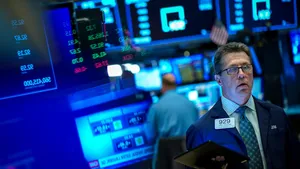Gold and Silver Futures: A Deep Dive into Market Dynamics and Investment Strategies
Meta Description: Navigate the volatile world of gold and silver futures trading with expert insights, market analysis, and practical investment strategies. Learn about price fluctuations, risk management, and potential rewards. #goldfutures #silverfutures #commodities #investing #marketanalysis
Imagine this: You're staring at your screen, watching the fluctuating prices of gold and silver futures contracts. The adrenaline is pumping! Will you capitalize on this moment, or will you get caught in the whirlwind of market volatility? This isn't just about numbers on a screen; it's about understanding the intricate dance of global economics, geopolitical events, and investor sentiment. It’s about making informed decisions, mitigating risk, and potentially reaping substantial rewards. This detailed guide will equip you with the knowledge and strategies to navigate the complex world of gold and silver futures, offering a perspective honed by years of experience in the financial markets. We'll delve deep into the factors driving price movements, explore various trading strategies, and address the crucial aspects of risk management. Whether you're a seasoned trader or a curious newcomer, this in-depth analysis will provide you with valuable insights and actionable strategies. Prepare to unlock the secrets of this dynamic market and confidently chart your course to success. Forget simplistic overviews; we're diving headfirst into the nuances, the subtleties, the very heartbeat of gold and silver futures trading. Let's begin this exciting journey together!
Gold and Silver Futures: Understanding the Market
Gold and silver futures contracts represent agreements to buy or sell a specific quantity of these precious metals at a predetermined price on a future date. These contracts, traded on exchanges like the COMEX (Commodity Exchange), are a cornerstone of the commodities market. Their prices are influenced by a myriad of factors, making them both exciting and potentially risky investment vehicles.
Think of it like this: gold and silver aren't just pretty things; they're safe haven assets. When economic uncertainty looms large—think geopolitical turmoil or inflation fears—investors flock to gold and silver, driving up demand and, consequently, prices. This is why understanding macroeconomic trends is paramount when trading these futures.
Key Factors Influencing Gold and Silver Prices:
- Inflation: High inflation often leads to increased demand for gold and silver as investors seek to protect their purchasing power. It's a classic hedge against inflation, you see.
- Interest Rates: Rising interest rates can put downward pressure on precious metal prices, as they make holding non-interest-bearing assets like gold less attractive. Conversely, lower rates can boost demand.
- US Dollar: The US dollar's strength inversely correlates with gold and silver prices. A stronger dollar makes these metals more expensive for buyers using other currencies, reducing demand.
- Geopolitical Events: Global instability, wars, and political uncertainty tend to push investors towards safe haven assets like gold, increasing its value.
- Industrial Demand: Silver has significant industrial applications, so its price is also influenced by the manufacturing sector's health.
| Factor | Impact on Gold Prices | Impact on Silver Prices |
|-----------------|-----------------------|------------------------|
| Inflation | Positive | Positive |
| Interest Rates | Negative | Negative |
| US Dollar Strength| Negative | Negative |
| Geopolitical Risk| Positive | Positive |
| Industrial Demand| Minimal | Significant |
Trading Strategies: A Multifaceted Approach
Trading gold and silver futures requires a carefully considered strategy. There's no "one-size-fits-all" approach. Instead, successful traders often employ a combination of techniques, adapting their strategies based on market conditions and personal risk tolerance.
Here are a few common strategies:
- Day Trading: This high-octane approach involves taking positions and closing them within the same trading day. It requires close monitoring of market movements and a high degree of skill and risk tolerance. Not for the faint of heart!
- Swing Trading: Swing traders hold positions for a few days or weeks, aiming to capitalize on short-term price swings. This requires a good understanding of technical analysis and chart patterns.
- Long-Term Investing: This more patient approach involves holding positions for months or even years, benefiting from long-term price trends. It requires a longer-term perspective and a higher risk tolerance.
Remember, my friend, diversification is key! Don't put all your eggs in one basket.
Risk Management: The Cornerstone of Success
No discussion about futures trading is complete without addressing risk management. The market can be brutal, and losses can mount quickly if you're not careful. Here's how to stay afloat:
- Position Sizing: Never risk more than you can afford to lose on any single trade. This is crucial, no ifs, ands, or buts.
- Stop-Loss Orders: These orders automatically sell your position when the price reaches a predetermined level, limiting potential losses. It's your safety net—use it!
- Diversification: Spread your investments across different assets to reduce your overall portfolio risk. Don't put all your eggs in one basket. This is so important.
- Hedging: Use hedging strategies to offset potential losses in one market with gains in another. This can offer protection against adverse market movements.
Navigating the Complexities: A Practical Guide
Understanding the intricacies of gold and silver futures trading requires more than just theoretical knowledge. It needs practical application and continuous learning. Here’s where I share my expertise, based on years of experience.
Technical Analysis: Technical analysis, the study of past market data to predict future trends, is an invaluable tool. Understanding chart patterns, indicators like RSI and MACD, and support and resistance levels is crucial.
Fundamental Analysis: Fundamental analysis involves assessing factors that influence the underlying value of an asset. For gold and silver, this would include factors like inflation, interest rates, and global economic conditions.
News and Events: Keep a close eye on news and events that could impact gold and silver prices. Geopolitical events, central bank decisions, and changes in regulatory frameworks can all have a significant effect.
Know Your Limits: Never let emotions dictate your trading decisions. Fear and greed are your worst enemies! Stick to your trading plan and avoid impulsive actions.
Frequently Asked Questions (FAQ)
Here are some common questions about gold and silver futures, along with my insightful answers:
Q1: Are gold and silver futures suitable for beginners?
A1: While anyone can trade them, beginners should proceed with caution. Start with a small amount of capital, focus on learning, and consider paper trading (simulated trading) first. Gold and silver futures are complex instruments, and a lack of thorough understanding can lead to substantial losses.
Q2: What are the transaction costs involved in trading gold and silver futures?
A2: Transaction costs include commissions (paid to your broker), exchange fees, and potentially other charges. These costs can impact profitability, so it's essential to understand them fully before you begin trading.
Q3: How can I manage risk effectively when trading futures?
A3: Effective risk management involves strategies like using stop-loss orders, diversifying your portfolio, and never risking more capital than you can afford to lose on a single trade. Thorough research and careful planning are key.
Q4: What are the best resources to learn more about gold and silver futures trading?
A4: There are many resources available, including books (look for titles on technical and fundamental analysis), online courses, and reputable financial news websites.
Q5: What are the main differences between trading gold and silver futures?
A5: While both are precious metals and often move in tandem, silver has a higher volatility compared to gold. Silver also has a significant industrial demand component, influencing its price differently than gold's primarily investment-driven movements.
Q6: How do I choose a reputable broker for futures trading?
A6: Choose a broker regulated by a reputable authority, with a strong track record, competitive fees, and robust trading platforms. Check reviews and compare brokers before making a decision.
Conclusion: Embark on Your Precious Metals Journey
Trading gold and silver futures isn't a get-rich-quick scheme; it's a journey requiring knowledge, discipline, and a long-term strategy. By understanding the market dynamics, employing effective risk management techniques, and continuously learning and adapting, you can increase your chances of success in this exciting and potentially rewarding market. Remember, the path to success is paved with consistent effort, strategic thinking, and never-ending learning. It's a marathon, not a sprint! So, buckle up and embark on your precious metals trading adventure! Good luck, and may the market be ever in your favor!



